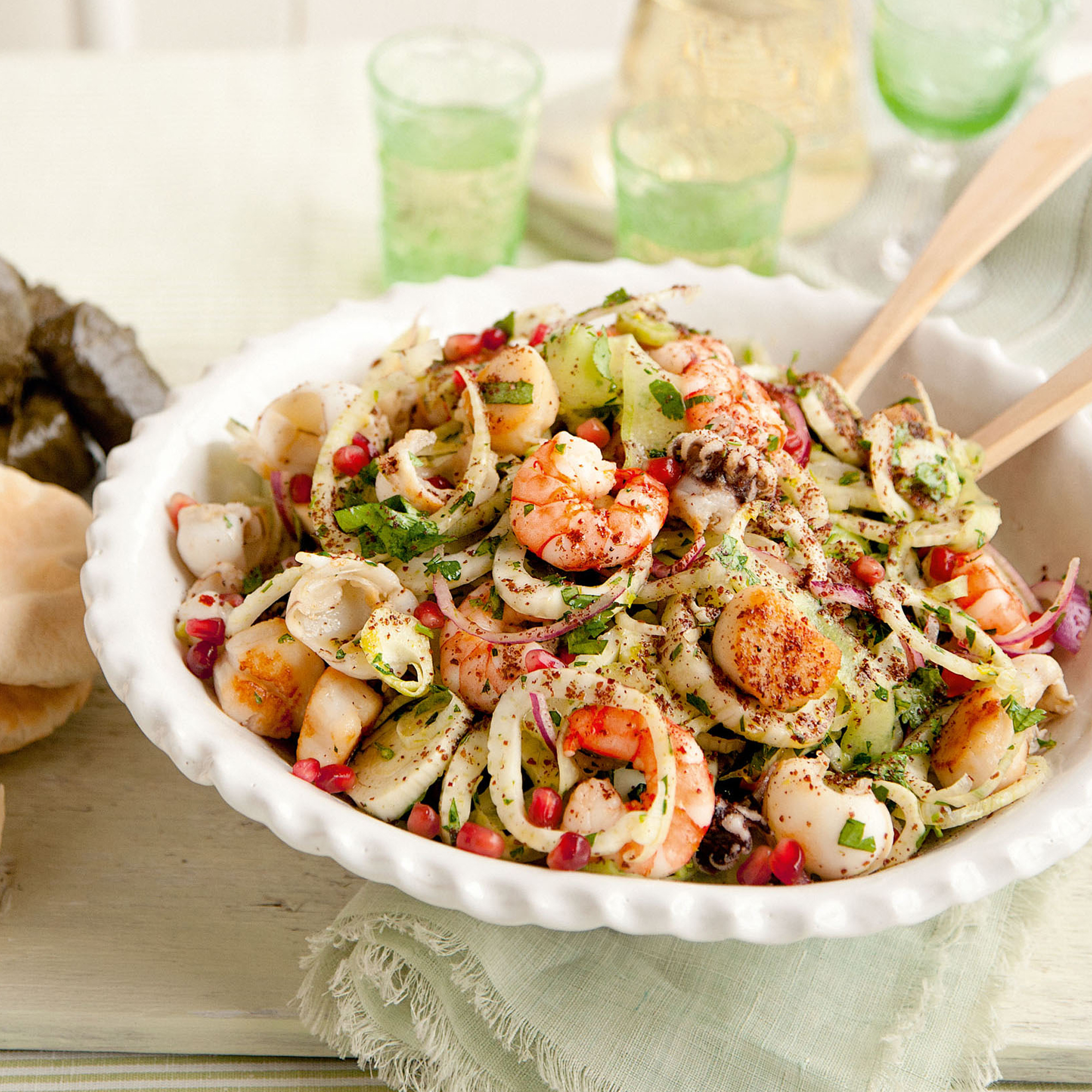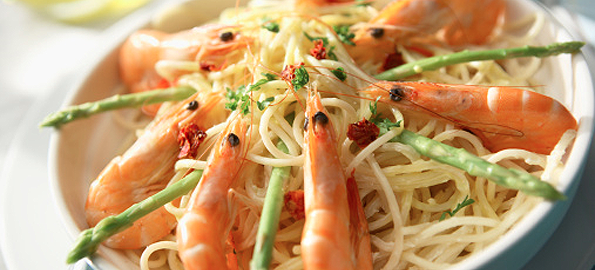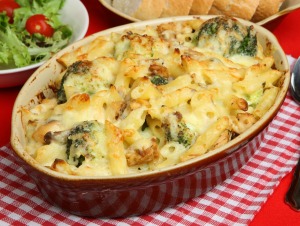Seafood Pasta Recipes Biography
Neapolitan cuisine has ancient historical roots that date back to the Greco-Roman period, which was enriched over the centuries by the influence of the different cultures that controlled Naples and its kingdoms, such as that of Aragon and France.Since Naples was the capital of the Kingdom of Naples, its cuisine took much from the culinary traditions of all the Campania region, reaching a balance between dishes based on rural ingredients (pasta, vegetables, cheese) and seafood dishes (fish, crustaceans, mollusks). A vast variety of recipes is influenced by the local aristocratic cuisine, like timballi and the sartù di riso (it), pasta or rice dishes with very elaborate preparation, while the dishes coming from the popular traditions contain poor but nutritionally healthy ingredients, like pasta e fagioli (pasta with beans) and other pasta dishes with vegetables.Apulian red-figure fish plate, ca. 340 BC.Naples has a history that goes back many centuries: the city itself predates many others in that area of the world, including Rome. It has endured the Greeks, Romans, the Plague, and dozens of successions of kings from France and Spain and each culture left a mark on the way food is prepared in Naples and Campania itself.Fishes in a mosaic found in Pompeii. Naples National Archaeological Museum.Fresco from Pompeii with fruit.Finding the connections between modern and Greco-Roman culinary traditions is not always easy. Among the traces of classical culinary tastes, plates from the period of Greek rule found in Magna Graecia (southern Italy) depict fishes and mollusks, an indication that seafood was appreciated during that period. Frescoes from Pompeii depict fruit baskets filled with (figs and pomegranates). An excavation at Oplontis in the Villa Poppaea shows a fresco of a cake, the ingredients of which are not yet known.Carbonized bread found in Pompeii.The Neapolitan painter Massimo Stanzione poses a woman in festive local costume (ca 1635) with a market chicken: only the rich ate chicken on an ordinary occasionLithography from an original drawing by Teodoro Duclère (1816–1869), titled"Il tavernaio".The Roman garum is the ancient sauce most similar to that used for the modern colatura d'alici (it), typical of Cetara. It can be traced back to the sweet-sour taste typical of the Roman cooking described by Apicius, along with the use of raisins in salty dishes, like the pizza di scarola (endive pie), or the braciole al ragù (meat rolls in ragù sauce). The use of wheat in the modern pastiera cake, typical of Easter, could have had originally a symbolic meaning, related to cults of Artemis, Cybele and Ceres and pagan rituals of fertility, celebrated around the Spring equinox. The name struffoli, a Christmas cake, comes from the Greek word στρόγγυλος (stróngylos, meaning "round-shaped").The Spanish and French rule in Naples initiated the difference between the cuisine of the aristocrats and that of the poorer classes. The former was characterized by elaborate, more cosmopolitan, dishes, and a greater number of expensive ingredients, including meat. The poor used foods that were cheaper and could be grown locally (that is, cereals and vegetables). These were embellished over the centuries and came into contact with the influence of the aristocratic cuisine, so that today traditional recipes of the poorer classes have often acquired great quality and taste, while preserving the original simple ingredients.One of the most famous chefs from the nobles' courts in Naples was Vincenzo Corrado (it).Giorgio Sommer (1834-1914), "Napoli - Fabbrica di maccheroni". Hand-colored photo. Catalog number: 6204.There is a great variety of Neapolitan pastas. Pasta was not invented in Naples, but one of the best grades available is found quite close by, in Gragnano, a few kilometers from the capital. It was here also that the industrial production of pasta started, with the techniques to dry and preserve it. The main ingredient is durum wheat, harder to manipulate than soft wheat, so the industrial production had greater success than in northern Italy, where home-made pasta is more popular. Traditionally in Naples pasta must be cooked "al dente", while soft pasta is not tolerated.The most popular variety of pasta, besides the classic spaghetti and linguine, are the paccheri and the ziti, long pipe-shaped pasta, broken by hand before cooking and usually topped with Neapolitan ragù. Pasta with vegetables is usually also prepared with pasta mista (pasta ammescata in Neapolitan language), which is now produced industrially as a distinct variety of pasta, but which was once sold cheaply, made up of broken pieces of different kinds of pasta.Hand-made gnocchi, prepared with flour and potatoes, have become a popular method of overcoming the Neapolitan disdain for potatoes. In 1949 W. H. Auden wrote Igor Stravinsky from Forio in Ischia, "Forio thinks us crazy because we eat potatoes, which are to them a mark of abject poverty." In reporting this, Francis Steegmuller, a longtime resident of Naples, remarks on the French-inspired gattò, in which "the potato complement is nearly overwhelmed by cheese, ham and other ingredients".Some of the more modern varieties of pasta, like the Scialatelli, are also becoming popular,Tomato variety used for the piennolo Tomatoes entered the Neapolitan cuisine during the 18th century. The industry of preserving tomatoes originated in 19th-century Naples, resulting in the export to all parts of the world of the famous "pelati" (peeled tomatoes) and the "concentrato" (concentrated tomato juice). There are traditionally several ways of preparing home-made tomato preserves, either bottled tomato juice, or chopped into pieces. The famous "conserva" (sun dried concentrated juice) tomato is cooked for a long time and becomes a dark red cream with a velvety texture.Some of Campanian dishes using vegetables, like the parmigiana di melanzane (aubergine pie) or peperoni ripieni (stuffed peppers) can become real stars of the table. Some of the most typical products are friarielli (a local variety of Brassica rapa), Cichorium endivia, smooth or curly (two varieties of endive), several types of broccoli, verza (Savoy cabbage, a variety of Brassica oleracea sabauda (it)) and others, used to prepare the minestra maritata. Different types of beans, chickpeas and other legumes are very popular.
the burrini di Sorrento, small provolone cheese with a butter hartthe provoloni, the caciocavalli of different aging Cicenielli.Neapolitan cooking has always used an abundance of all kinds of seafood from the Tyrrhenian sea. Dr Johnson's friend Hester Thrale was enthusiastic for "the most excellent, the most incomparable fish I ever ate; red mullets large as our mackerel, and of singularly high flavour; beside calamaro or ink-fish, a dainty worth of imperial luxury". In 1759, when Ferdinando Galiani was sent as secretary to the Neapolitan ambassador in Paris, he pined for familiar foods; he found "no fruit, no cheese, no good seafood— everything here does violence to the Neapolitan temperament". Recipes use either less expensive fishes, in particular anchovies, and other fishes, like the ones used to prepare the zuppa: scorfano (Scorpaena scrofa), tracina (Trachinus draco), cuoccio (Triglia lanterna), or fishes of medium and large size, like spigola (European seabass) and orate (gilt-head bream), presently sold mainly from fish farms, or like dentice (Dentex dentex), sarago (Diplodus sargus sargus) and pezzogna (Pagellus bogaraveo). Fishes of very small size are also used:The cicenielli, baby fishes, very small and transparent, prepared either steamed or fried in a dough The fravagli, few centimeter long, mainly of triglia (Mullus surmuletus) or retunni (Spicara smaris), typically fried The baccalà (cod) and stockfish, imported from northern Europe seas, are either fried or cooked with potatoes and tomatoes.
Most cephalopods are employed (octopus, squid, cuttlefish), as well as crustacea (mainly shrimp).
Shellfish cozze (mussels), vongole (clams), cannolicchi (Ensis siliqua, taratufi, telline (Donax trunculus), sconcigli (Haustellum brandaris)) are employed in many seafood meals, and sometimes are eaten raw, but this happens more and more seldom nowadays. Clams require a special note. The vongola verace is Venerupis decussata, not to be confused with the Philippines clam (Venerupis philippinarum), very frequently found on the markets, and often called verace in northern Italy's markets), and the lupino (Dosinia exoleta).It is now forbidden by law to sell and eat the sea dates (datteri di mare, Lithophaga lithophaga), as their fishing seriously damages coastline rocks, mainly in the Sorrento peninsula.Meat is not used as frequently in Neapolitan cooking as in the cuisine of Northern Italy. The most common kinds of meat used in Neapolitan cooking are:
sausage: salsicce and cervellatine (it), with not finely hand-cut meat (a ponta 'e curtiello)
pork liver, rounded in a net of pork's fat and a bay leaf trippa (tripe) and other more humble cuts of pork or beef, like the typical 'O pere e 'o musso (it) (pork's foot and cow's nose), and the zuppa di soffritto (it), a spicy soup with tomato and hot chili pepper.braciole, pork rolls stuffed with raisins, pine nuts and parsley, fixed with toothpicks and cooked in ragù lamb and goat are roasted, usually with potatoes and peas, typically around Easter rabbit and chicken, often cooked alla cacciatora, pan fried with tomatoes Beef or other red meat with tomatoes, cooked for a long time to tenderize an inexpensive piece of meat as in Carne Pizzaiola The most popular bread is pane cafone prepared with natural yeast, cooked in a wood-fired oven with hard crust and large holes inside. Also used are sfilatini, somewhat similar to a French baguette, but shorter and thicker. rosetta rolls and other varieties are also present.
Seafood Pasta Recipes Recipe Of Pasta In Urdu By Chef Zakir In Hindi Salad With White Sauce In Urdu In Indian Style In Red Sauce Photos
Seafood Pasta Recipes Recipe Of Pasta In Urdu By Chef Zakir In Hindi Salad With White Sauce In Urdu In Indian Style In Red Sauce Photos

Seafood Pasta Recipes Recipe Of Pasta In Urdu By Chef Zakir In Hindi Salad With White Sauce In Urdu In Indian Style In Red Sauce Photos
Seafood Pasta Recipes Recipe Of Pasta In Urdu By Chef Zakir In Hindi Salad With White Sauce In Urdu In Indian Style In Red Sauce Photos
Seafood Pasta Recipes Recipe Of Pasta In Urdu By Chef Zakir In Hindi Salad With White Sauce In Urdu In Indian Style In Red Sauce Photos
Seafood Pasta Recipes Recipe Of Pasta In Urdu By Chef Zakir In Hindi Salad With White Sauce In Urdu In Indian Style In Red Sauce Photos
Seafood Pasta Recipes Recipe Of Pasta In Urdu By Chef Zakir In Hindi Salad With White Sauce In Urdu In Indian Style In Red Sauce Photos
Seafood Pasta Recipes Recipe Of Pasta In Urdu By Chef Zakir In Hindi Salad With White Sauce In Urdu In Indian Style In Red Sauce Photos
Seafood Pasta Recipes Recipe Of Pasta In Urdu By Chef Zakir In Hindi Salad With White Sauce In Urdu In Indian Style In Red Sauce Photos
Seafood Pasta Recipes Recipe Of Pasta In Urdu By Chef Zakir In Hindi Salad With White Sauce In Urdu In Indian Style In Red Sauce Photos
Seafood Pasta Recipes Recipe Of Pasta In Urdu By Chef Zakir In Hindi Salad With White Sauce In Urdu In Indian Style In Red Sauce Photos









No comments:
Post a Comment